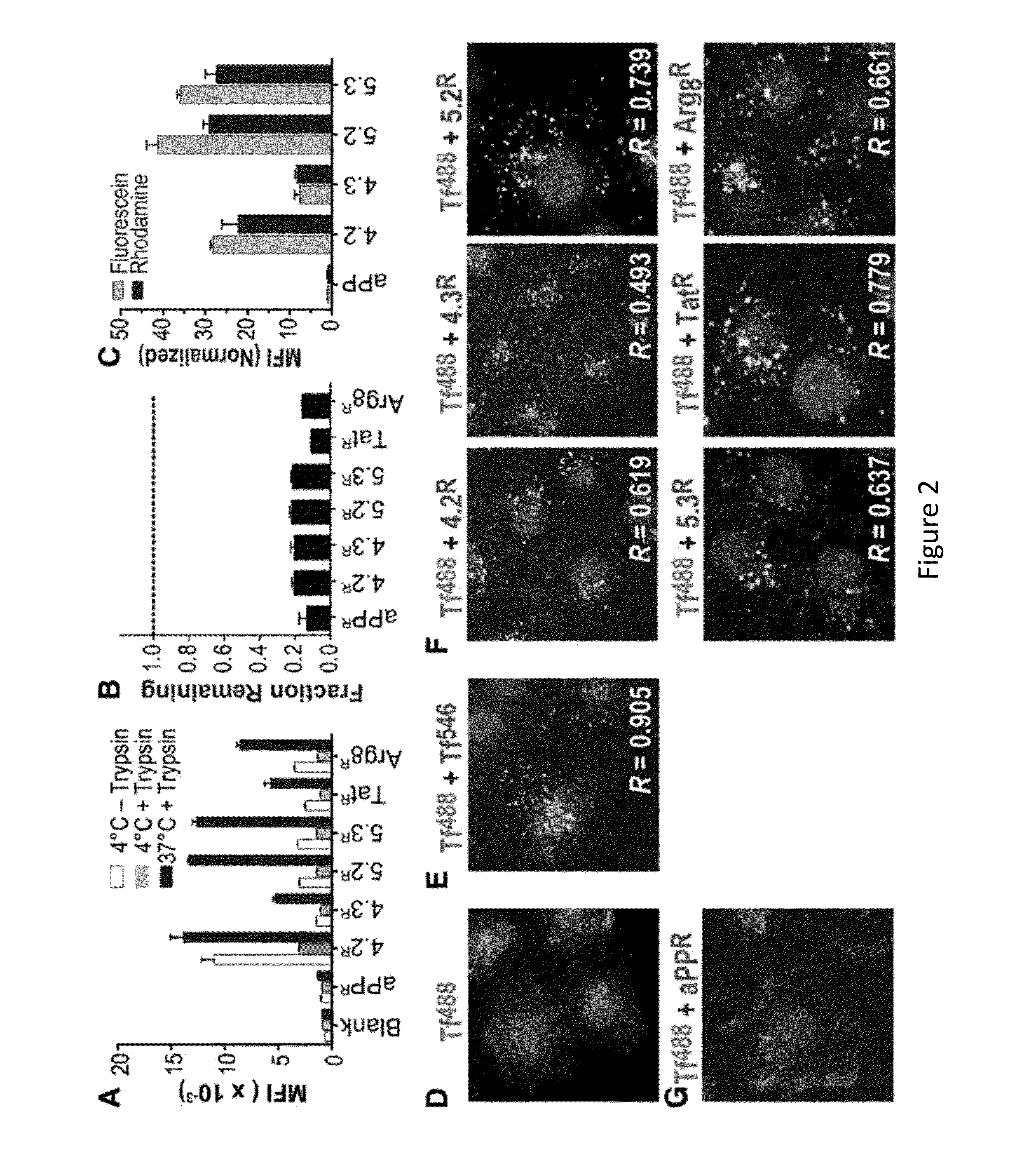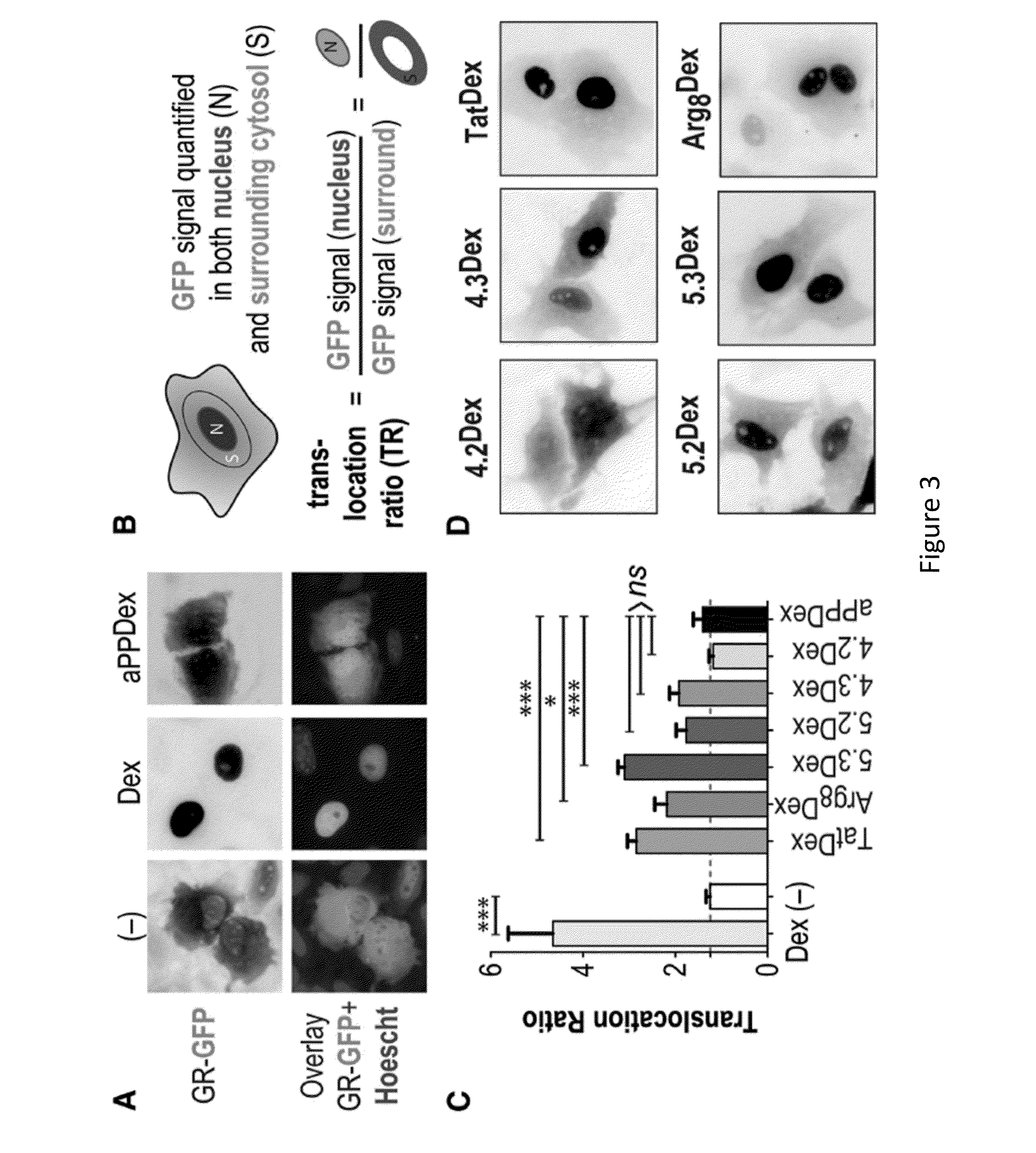Modified Proteins and Methods of Use Thereof
a technology of modified proteins and proteins, applied in the field of modified proteins, can solve the problems of complex interpretation of these experiments, limited action of peptidic moelcues, and the lik
- Summary
- Abstract
- Description
- Claims
- Application Information
AI Technical Summary
Benefits of technology
Problems solved by technology
Method used
Image
Examples
example 1
Arginine Topology Controls Escape of Minimally Cationic Proteins from Early Endosomes to the Cytoplasm
[0219]Proteins capable of crossing biological membranes show great promise as therapeutics as well as agents for delivery of macromolecules, such as siRNA, to the cytoplasm of target cells. In a broader sense, proteins that effectively traffic across membranes offer the potential to illuminate fundamental principles of cell biology. In the studies described herein, two small folded proteins were identified, the cationic miniature protein 5.3 and the zinc finger module ZF5.3, that achieve cytosolic access through rapid internalization and efficient escape from Rab5+ endosomes. The trafficking pathway that was mapped for these molecules is similar to that taken by botulinum toxin and anthrax toxins, which also escape from early endosomes (Simpson, 2004, Annu. Rev. Pharmacol. Toxicol. 44:167-193). The pathways followed by Tat and Arg8, however, resemble those of SV40 (Vonderheit and He...
example 2
Co-Administration of ZF 5.3 and Non-Covalently Linked Cargo Delivers Cargo to the Cytosol
[0274]HeLa cervical cancer cells were incubated in the presence of either 500 nM ZF 4.3-Rhodamine or 500 nM ZF 4.3-Rhodamine with 1 μM ZF 5.3 for 30 minutes. After incubation, external peptide was removed and internal peptide concentration was measured using a microscope with advanced correlation and detection hardware. In the absence of ZF 5.3, only a small amount of ZF 4.3 enters the cell interior, corresponding to ˜8% of the ZF 4.3 concentration added (FIG. 19). In the presence of ZF 5.3, the amount of ZF 4.3 that enters the cell interior quadrupled, raising to ˜35% of the concentration added (FIG. 19). In contrast, co-incubation of HeLa cells with ZF 5.3 and the canonical peptide octaarginine (Arg8) did not significantly increase intracellular Arg8 concentrations.
example 3
ZF5.3 is Superior to Both Antp and Arg8 for Trafficking a Biologically Active Peptide into the Cytosol
[0275]Cells were incubated in the presence of either 500 nM ZF 5.3-NBD or Antp-NBD or Arg8-NBD (FIG. 20). After incubation, internal peptide concentration was measured.
PUM
 Login to View More
Login to View More Abstract
Description
Claims
Application Information
 Login to View More
Login to View More - R&D
- Intellectual Property
- Life Sciences
- Materials
- Tech Scout
- Unparalleled Data Quality
- Higher Quality Content
- 60% Fewer Hallucinations
Browse by: Latest US Patents, China's latest patents, Technical Efficacy Thesaurus, Application Domain, Technology Topic, Popular Technical Reports.
© 2025 PatSnap. All rights reserved.Legal|Privacy policy|Modern Slavery Act Transparency Statement|Sitemap|About US| Contact US: help@patsnap.com



